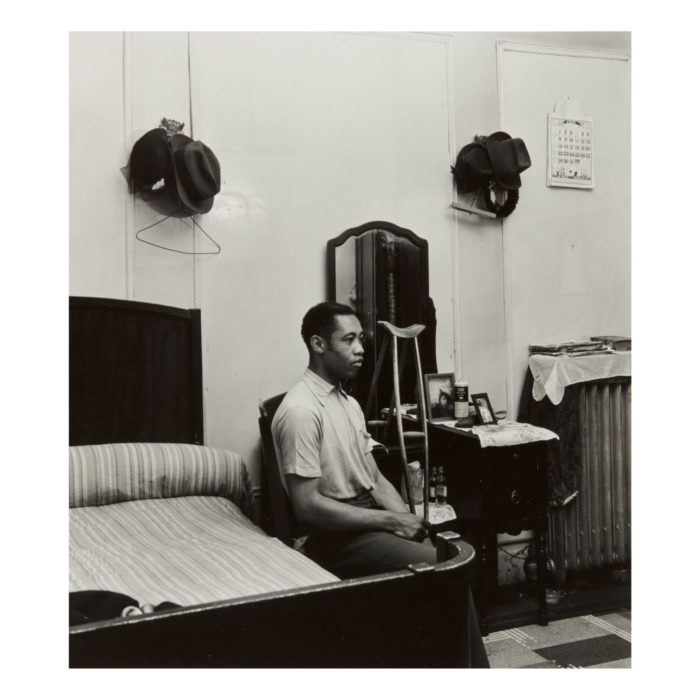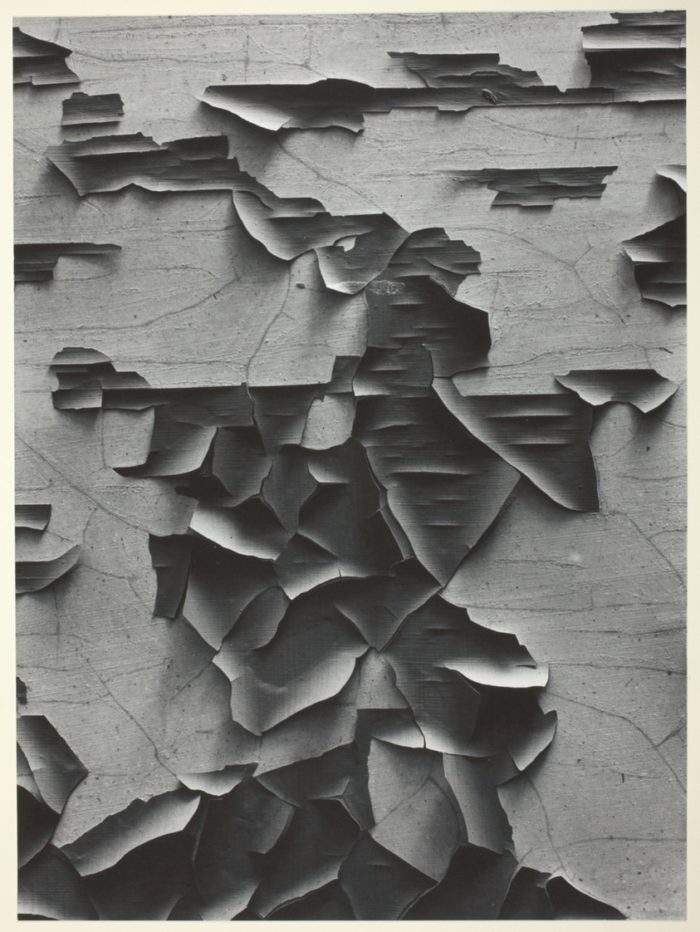Aaron Siskind (1903-1991): From Documentarian to Abstract Expressionist
Influential American photographer Aaron Siskind did not pick up a camera until age 26. The New York native was gifted a camera as a wedding gift and, until then, had been working as an English teacher in the New York City public school system. His interest in photography led him to join the New York Workers Film and Photo League (later called simply the New York Photo League), a group of documentary photographers dedicated to exposing and improving social conditions in contemporary society. Siskind would eventually part ways with the League as the self-taught artist’s style and vision evolved from documentary-style photography to more abstract images. Aaron Siskind’s photography has been widely exhibited, and his career has been marked with numerous awards, including a Guggenheim Fellowship and the Distinguished Photography Award from the Friends of Photography. He taught photography at Chicago’s Institute of Design, serving as department head from 1961 to 1971, before becoming an instructor at the Rhode Island School of Design until his retirement in the late 1970s. Aaron Siskind continued his work as a photographer until his death in 1991, and his photographs remain a compelling example of the shift from social documentation to abstraction in contemporary photography.
We look at the world and see what we have learned to believe is there. We have been conditioned to expect… but, as photographers, we must learn to relax our beliefs… if you look very intensely and slowly, things will happen that you never dreamed of before.
-Aaron Siskind
Aaron Siskind’s early work was representative of the documentary style prevalent among photographers of the time, as the work he produced during his time with the New York Photo League demonstrates. This style is seen in his famous series, The Harlem Document (1932-1940), a cultural retrospective of Black urban American in 1930s Harlem. In this series, the subject is the focal point of both the image and the narrative: the community’s unfair labor and housing conditions. The photographs served as part of a call to action, exposing the wrongs faced by the Black community. This photo-documentation focused on social justice can also be seen in Aaron Siskind’s 1939 series Civic Repertory Theater, which documented the destruction of the building. Siskind intended the series to “act as a metaphor for other issues of destruction, both personal and cultural (Siskind 23).” However, elements of abstraction are present as well, as the series includes close-up images of subjects as well as the deliberate manipulation of processing elements, like exposure. His first complete series of abstract images was entitled Tabernacle City, which marked a transition in his work.

Tabernacle City was a series that began in 1932, as Aaron Siskind captured the architecture of the Methodist retreat community of Cottage Oaks on the island of Martha’s Vinyard Combining aspects of “straight” photography with abstraction, he photographed the structural elements of the town “What attracted Siskind to this architecture, then, was again the melding of form and content…he was originally drawn, however, to the shapes and ornamentation of the buildings, particularly the framing of the windows and the design of the ornamentation (Chiarenza 824)” This departure from the traditional medium of photography was not well-received by the League, which resulted in him dissolving his association with them in 1941.

By 1943, Aaron Siskind had ceased placing primary importance on the subject in his compositions, instead working with geometrical element . Inspired by the abstract expressionist painters with whom he befriended, Siskind turned away from the sociopolitical repertoire and instead focused on seeking meaning from the objects he observed around him. Post World War II, Aaron Siskind’s work focused on his reading of the world as an abstract series of forms, lines, and texture . As such, he revolutionized the medium of photography as an art form and continues to be an influential American artist.


Resources:
https://www.theartstory.org/artist/siskind-aaron/
https://www.icp.org/browse/archive/constituents/aaron-siskind?all/all/all/all/1
h tps://www.annexgalleries.com/artists/biography/2193/Siskind/Aaron
Chiarenza, Carl. “Form and Content in the Early Work of Aaron Siskind.” The Massachusetts Review, vol. 19, no. 4, 1978, pp. 8 8–33. J TOR, http://www.jstor.org/stable/25088912. Accessed 07 Feb. 2023.
Siskind. (1994). Aaron Siskind : toward a personal vision 1935-1955. Boston College Museum of Art.
